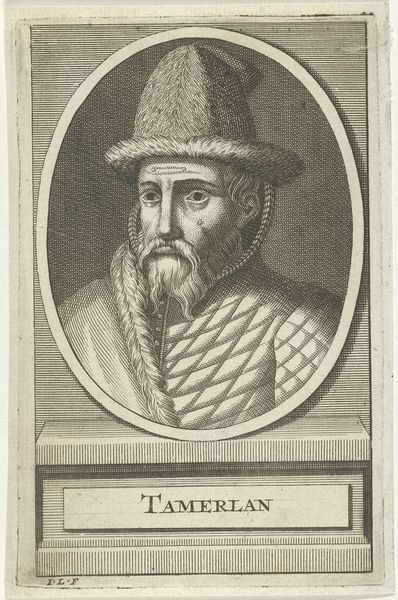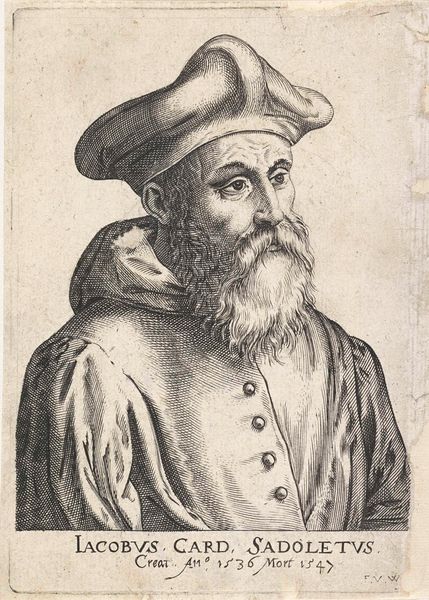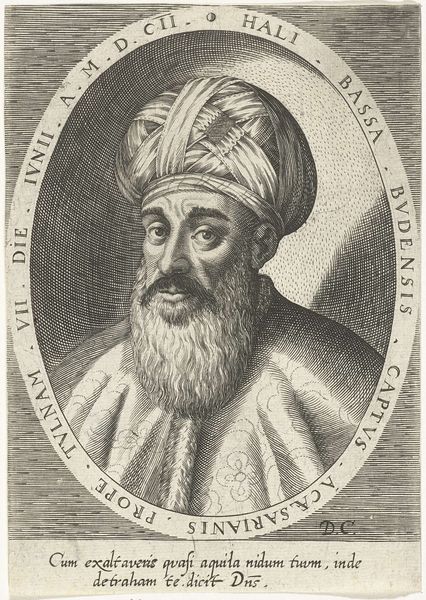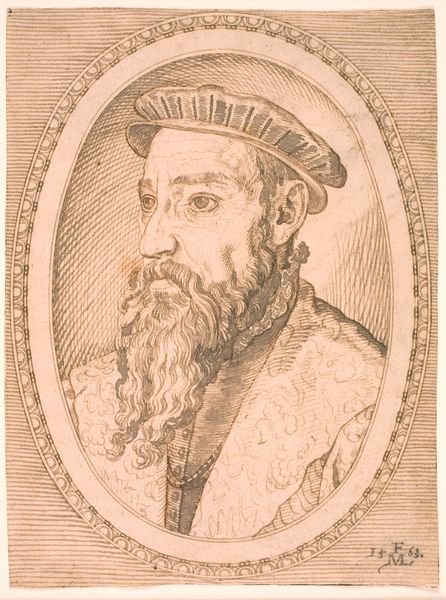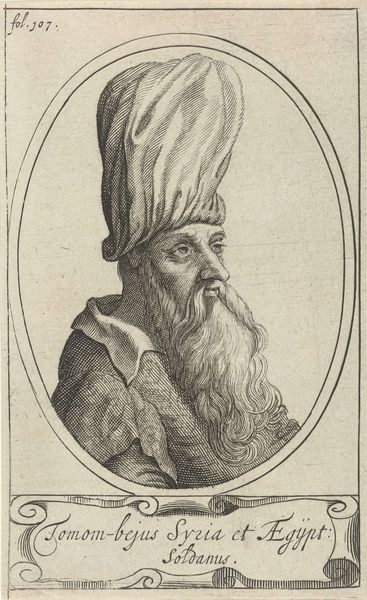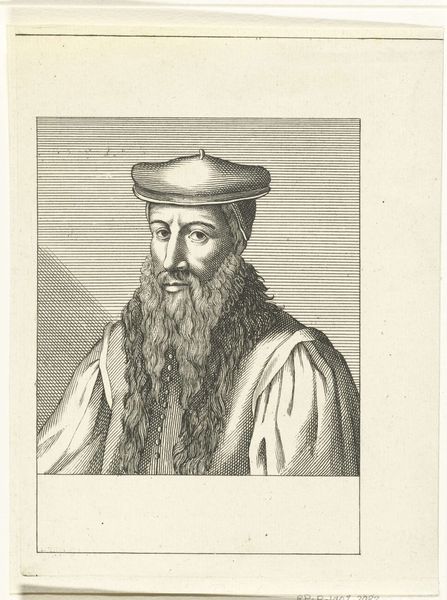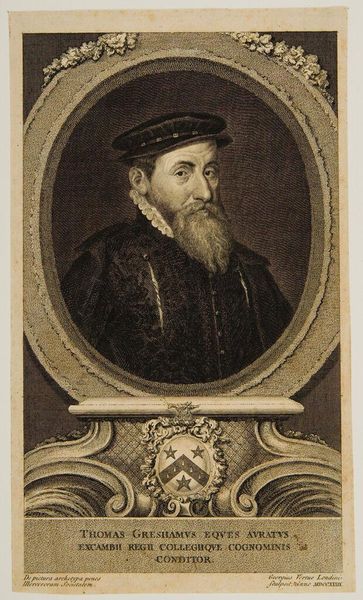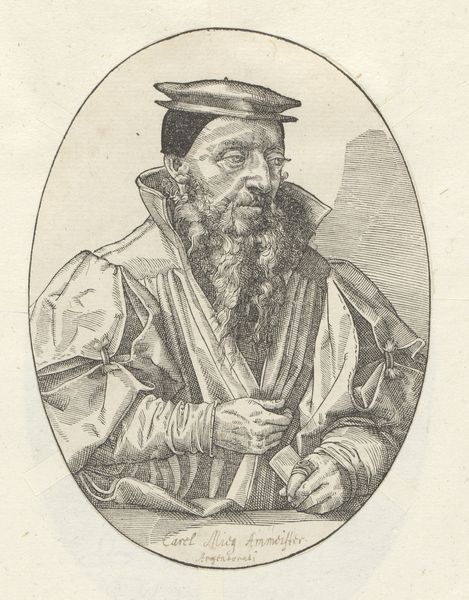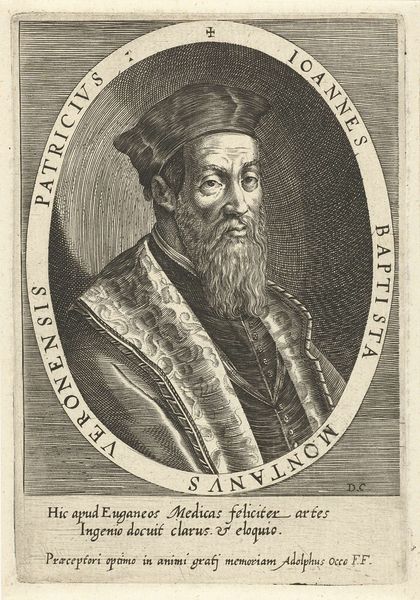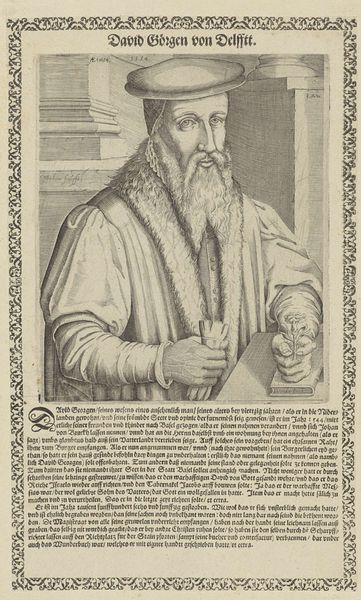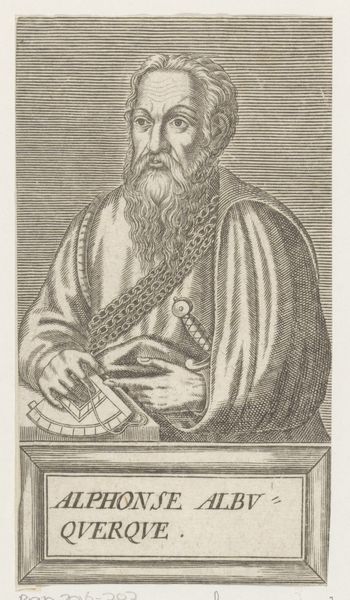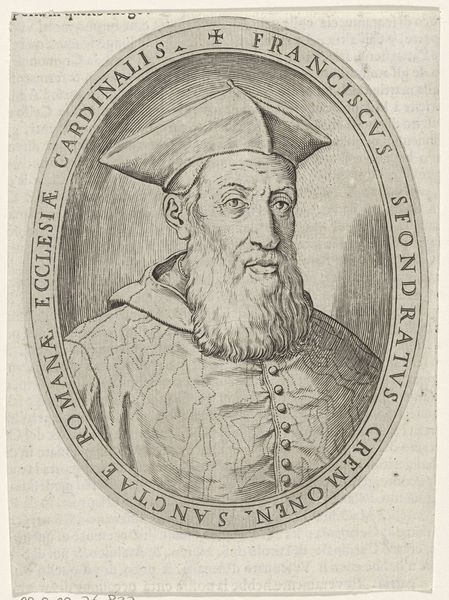
print, engraving
#
baroque
#
dutch-golden-age
# print
#
old engraving style
#
engraving
Dimensions: height 159 mm, width 104 mm
Copyright: Rijks Museum: Open Domain
Curator: This is a striking portrait of Pieter van Foreest, dating back to 1609, created by Willem van Swanenburg. It’s an engraving, currently residing at the Rijksmuseum. The texture of the fur trim stands out immediately. Editor: It’s so crisp, isn't it? It looks remarkably modern despite its age. All those tightly-controlled lines… I’m fascinated by how Swanenburg achieves such dimensionality with what is essentially a linear medium. The labour involved must have been immense. Curator: Indeed. And consider what Pieter van Foreest himself represents. Below the oval frame, his name, "Petrus Forestus Medicus", signifies his status as a physician. We see the stern and confident gaze of someone in a respected profession, almost like a visual statement of his medical authority. Editor: Ah, the trappings of authority! Notice the fur, the meticulously rendered fabric of his coat, and even his hat—all meticulously detailed. There’s something in how this authority is displayed – not merely by profession but constructed by lavish materials, suggesting the prestige associated with learned professions at the time. It really points to how wealth and expertise were linked. Curator: I completely agree. Think also about how that very same hat, and that style of dress, became symbols of wisdom, almost archetypal imagery representing learnedness across multiple paintings and etchings of the era. The fur particularly would indicate warmth, protection but also, status, so what kind of cultural memory does it evoke when viewed centuries later? Editor: Exactly. This wasn't just capturing an individual likeness; it was constructing a visual identity meant to convey societal values and class status. This portrait is also speaking to the networks of distribution and exchange that were emerging for such prints, allowing access to particular ideals for a growing audience. Curator: Precisely! That speaks volumes about the power of reproducible images during that era, especially how the portrait contributes to, and uses already established conventions. Thank you, that has definitely shifted my own reading of the portrait. Editor: And for me. I often get caught up in looking only at how these things are made; looking at these conventional symbols reminds me there’s always meaning encoded within the material!
Comments
No comments
Be the first to comment and join the conversation on the ultimate creative platform.
